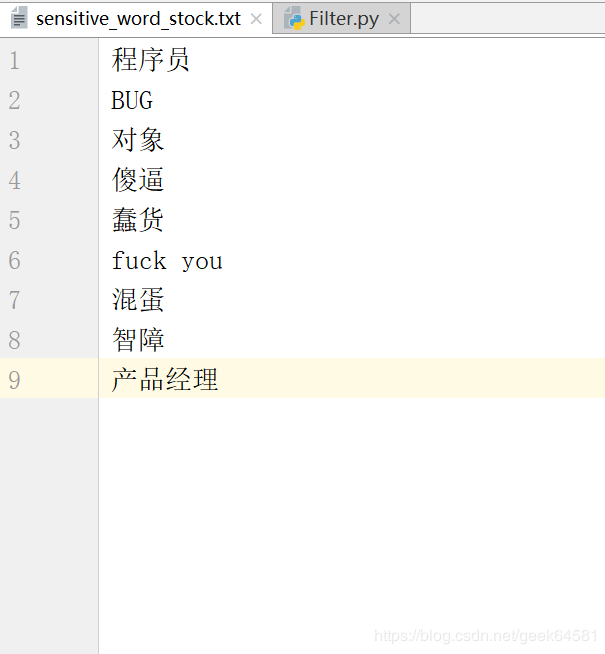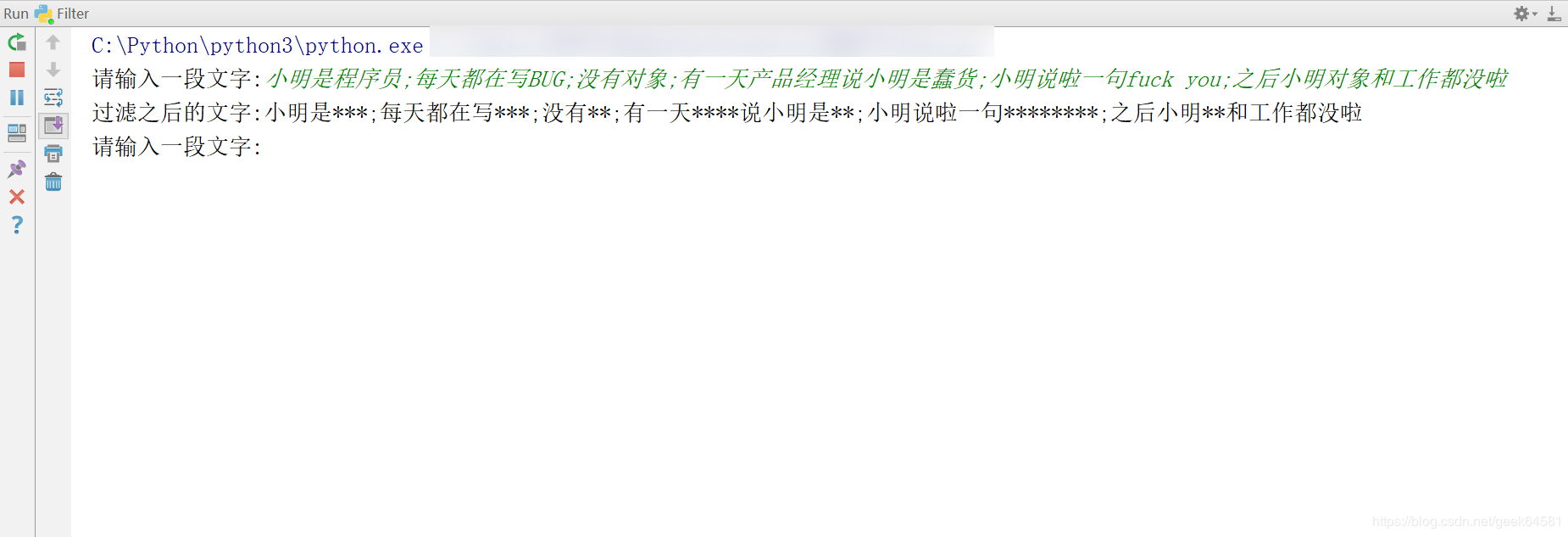今天就跟大家聊聊有关使用python怎么实现一个文章敏感词过滤功能,可能很多人都不太了解,为了让大家更加了解,小编给大家总结了以下内容,希望大家根据这篇文章可以有所收获。
第一步:建立一个敏感词库(.txt文本)

第二步:编写代码在文章中过滤敏感词(递归实现)
# -*- coding: utf-8 -*- # author 代序春秋 import os import chardet # 获取文件目录和绝对路径 curr_dir = os.path.dirname(os.path.abspath(__file__)) # os.path.join()拼接路径 sensitive_word_stock_path = os.path.join(curr_dir, 'sensitive_word_stock.txt') # 获取存放敏感字库的路径 # print(sensitive_word_stock_path) class ArticleFilter(object): # 实现文章敏感词过滤 def filter_replace(self, string): # string = string.decode("gbk") # 存放敏感词的列表 filtered_words = [] # 打开敏感词库读取敏感字 with open(sensitive_word_stock_path) as filtered_words_txt: lines = filtered_words_txt.readlines() for line in lines: # strip() 方法用于移除字符串头尾指定的字符(默认为空格或换行符)或字符序列。 filtered_words.append(line.strip()) # 输出过滤好之后的文章 print("过滤之后的文字:" + self.replace_words(filtered_words, string)) # 实现敏感词的替换,替换为* def replace_words(self, filtered_words, string): # 保留新字符串 new_string = string # 从列表中取出敏感词 for words in filtered_words: # 判断敏感词是否在文章中 if words in string: # 如果在则用*替换(几个字替换几个*) new_string = string.replace(words, "*" * len(words)) # 当替换好的文章(字符串)与被替换的文章(字符串)相同时,结束递归,返回替换好的文章(字符串) if new_string == string: # 返回替换好的文章(字符串) return new_string # 如果不相同则继续替换(递归函数自己调用自己) else: # 递归函数自己调用自己 return self.replace_words(filtered_words, new_string) def main(): while True: string = input("请输入一段文字:") run = ArticleFilter() run.filter_replace(string) continue if __name__ == '__main__': main()运行结果:

看完上述内容,你们对使用python怎么实现一个文章敏感词过滤功能有进一步的了解吗?如果还想了解更多知识或者相关内容,请关注亿速云行业资讯频道,感谢大家的支持。
免责声明:本站发布的内容(图片、视频和文字)以原创、转载和分享为主,文章观点不代表本网站立场,如果涉及侵权请联系站长邮箱:is@yisu.com进行举报,并提供相关证据,一经查实,将立刻删除涉嫌侵权内容。